The OCZ Vector 180 (240GB, 480GB & 960GB) SSD Review
by Kristian Vättö on March 24, 2015 2:00 PM EST- Posted in
- Storage
- SSDs
- OCZ
- Barefoot 3
- Vector 180
SSD Guru: The New OCZ Toolbox
During the past couple of years we've seen a big push for better toolbox-like software for SSDs from nearly every major vendor. The reason lies in the ability to differentiate because SATA 6Gbps has already been saturated for so long and being substantially different in the performance department has become practically impossible (although that will soon change with PCIe and NVMe). As a result, the SSD manufacturers have had to seek for other opportunities that can increase the value for the customer and software has lately become one of the key aspects in doing so. (It is worth noting that the motherboard industry went through the same process, whereby most motherboards in a price bracket had a flat feature set and software became a differentiating factor. -Ian)
The old OCZ Toolbox
OCZ has had a toolbox for as long as I can remember, but to be honest it looked more like an engineering tool rather than something that was aimed for the end-user. It did have the critical functionality (firmware update, secure erase, SMART data), but given what the competitors have put out to the market it was certainly lacking in both features and usability.
I guess my original Vector is in need of a firmware update
Today, along with the Vector 180 release OCZ is launching its fully redesigned toolbox called the SSD Guru. The overall design of the SSD Guru is much more user friendly and, as we've seen in other toolboxes, the welcoming screen already includes all the essential information about the drive so the user doesn't have to dig through the different tabs to find the important data.
The SSD Guru is available as both Windows and Linux installers as well as a separate bootable tool for Mac users. All Barefoot 3 based drives are supported along with the RevoDrive 350, but the older Indilinx and SandForce based drives are not (although you can still use the old toolbox if you wish).
The 'Tuner' tab includes two separate functions: SSD and OS Tuner. The SSD Tuner allows the user to issue a TRIM command to the drive to erase unused blocks to improve performance (although this should be unnecessary if you are running an OS with TRIM support) and it also includes a tool for increasing the over-provisioning for further performance gains.
The OS Tuner includes a few basic OS features that can be disabled for higher performance and/or capacity. By default the SSD Guru does nothing, but there are three preset options (reliability, performance and capacity) that you can choose from to optimize the OS. Different settings will be disabled based on what you choose (e.g. capacity option only disabled hibernation, whereas reliability disabled all four listed in the image above), although you can also customize the settings and disable what you see fit.
The maintenance tab has the common firmware update and secure erase functions that were also present in the old OCZ toolbox. The SSD Guru will also show a notification on the desktop if there's a newer firmware available.
The SSD Guru also supports logging, which can be a useful feature if you ever have issues with the drive and need to contact OCZ's support.
One feature OCZ emphasized is the ability to save a 'support package' that can then be sent to OCZ support if the drive isn't operating properly. The file includes a brief overview of the system with the necessary information that may be needed by the support staff for troubleshooting.
The one last cool feature of the SSD Guru is its SMART data monitor. Instead of just listing all the values like toolboxes usually do, OCZ has included three key icons that help the user to understand the purpose of each SMART value. While enthusiasts will understand the data without the keys, I still think it's a nice addition and something that at least slightly differentiates the SSD Guru from what is already out on the market.
The version that is being released today has all the core features that you would expect from a toolbox, but none of them are truly unique. Obviously, being a 1.0 release, OCZ only decided to include the most critical features to build the foundation for SSD Guru and the company already has a list of features that are under consideration for future updates (e.g. benchmarking tool). That said, I think the SSD Guru was a necessary move from OCZ in order to be considered a tier one OEM because it's an area where the company has certainly been lacking compared to the competition. I can't say the SSD Guru is special, but in the end the purpose of a toolbox is to provide easy access to the most needed SSD tools and the SSD Guru certainly does that.


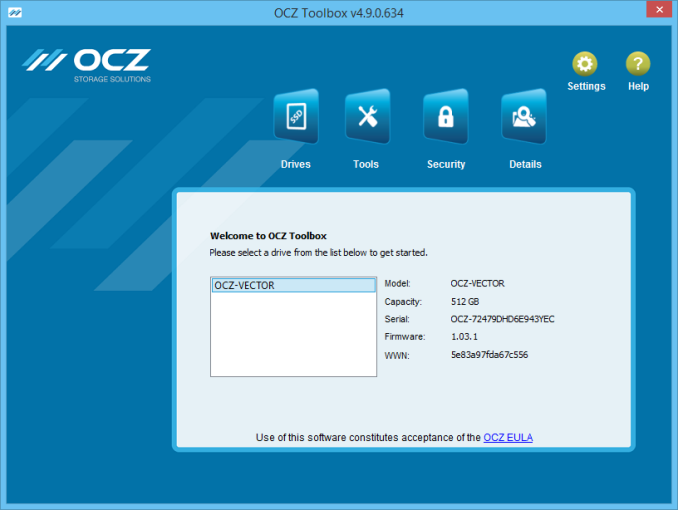
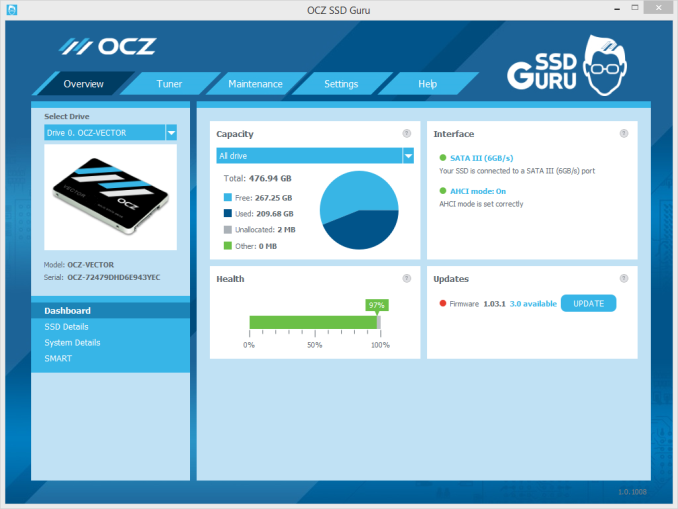
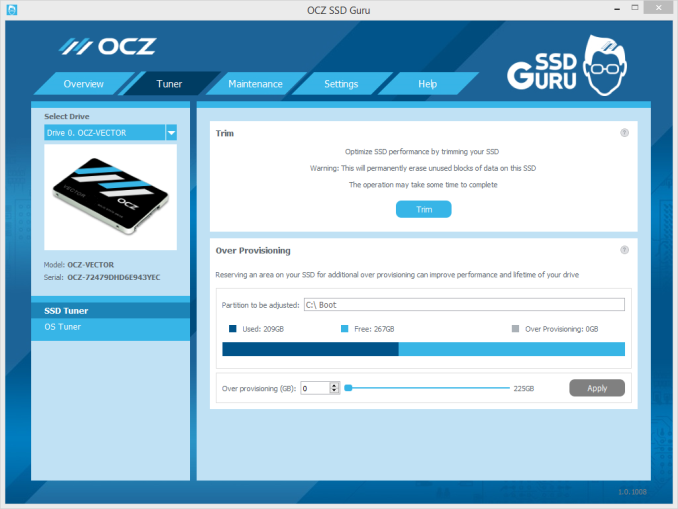
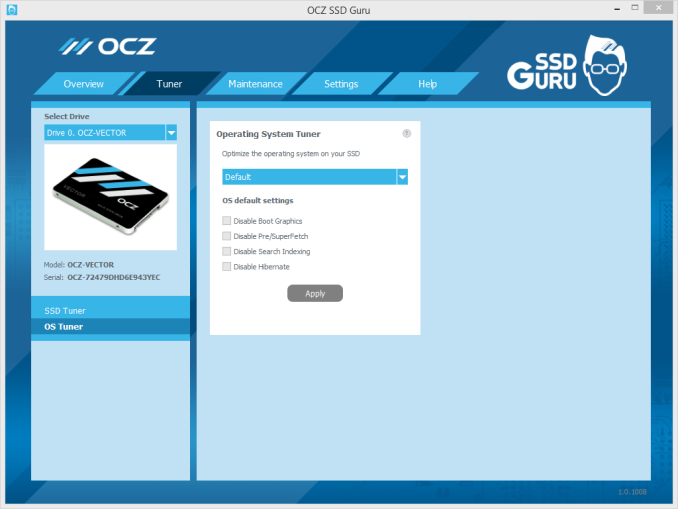
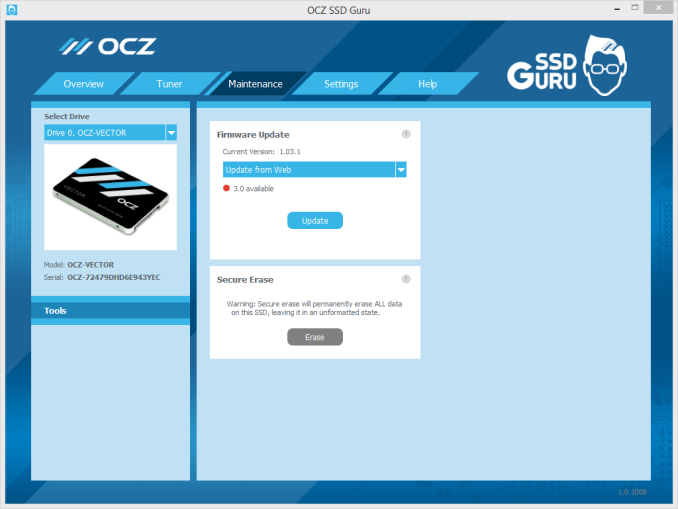
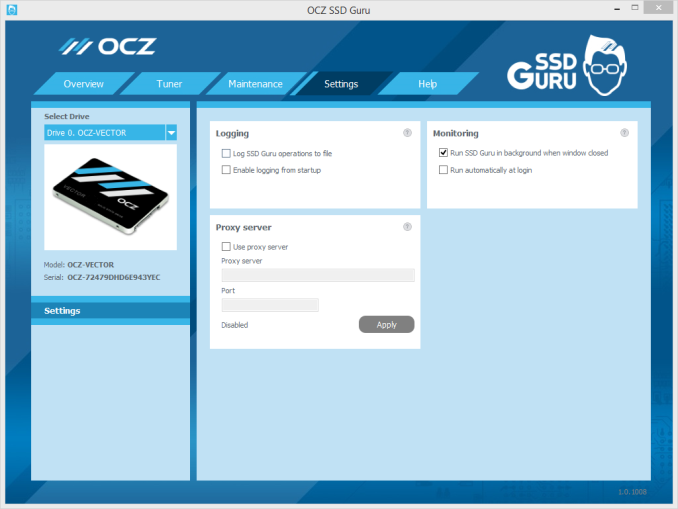
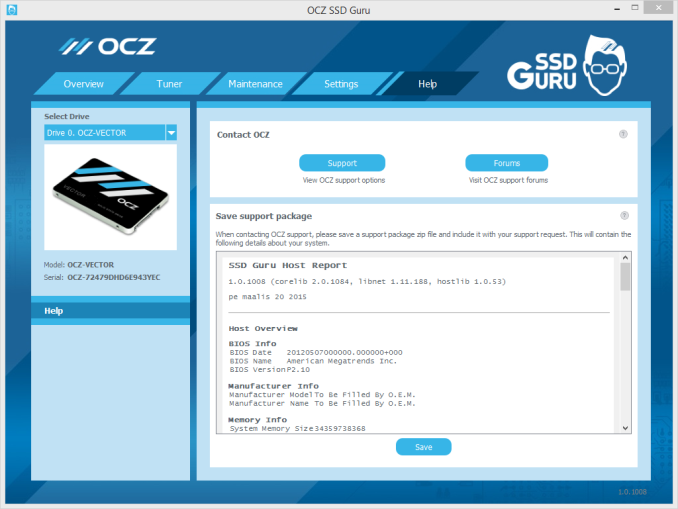
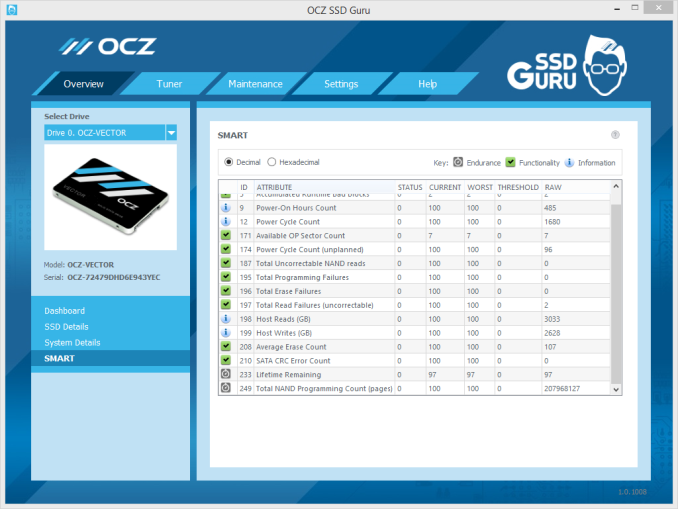








89 Comments
View All Comments
nils_ - Wednesday, March 25, 2015 - link
I distinctly remember that when I replaced a SSD in my workstation the Acronis tool, instead of copying my data from the source SSD to the new SSD copied the data to another, unrelated HDD in the system, happily overwriting the Linux partitions stored thereon... I had to unplug everything from the mainboard safe for the old and new SSD to make sure that it doesn't destroy any more of my data.MikeMurphy - Wednesday, March 25, 2015 - link
Macrium Reflect is free and wonderful to use.mapesdhs - Wednesday, March 25, 2015 - link
Yep, MR is what I use, it works very well and has a good interface.
Ian.
JonnyDough - Tuesday, March 31, 2015 - link
Thirded. It works wonderfully.The_Assimilator - Tuesday, March 24, 2015 - link
OCZ is still beating that Barefoot 3 dead horse for all it's worth. No wonder they went bankrupt. If you don't innovate, you die.ocztosh - Tuesday, March 24, 2015 - link
Hello The_Assimilator. Thanks for your comments. Innovation is definitely a key area of focus for us on both the client and enterprise sides of our SSD business. We currently have a lot of resources put on next generation controllers and have been working hard on client SSDs leveraging the latest Toshiba NAND flash, which includes TLC. While some of these products are on the horizon it was natural for us to update our Vector Series with A19 NAND flash, and rather than just make a NAND change we wanted to add new features not normally found in our client class products like power fail management plus (PFM+) to further improve reliability in applications that blur the line between enthusiast and workstation.It is true that Barefoot 3 has, and continues to be, a very strong platform for us as we have shipped so many drives based on this in-house controller, and it has been so solid that we have not had to rev silicon a single time. We will continue to push to innovate when it comes to SSD performance, features and cost and are committed to delivering more value for all our customers. Thanks again for your feedback.
Minion4Hire - Tuesday, March 24, 2015 - link
The bigger problem is that the SSD market has stagnated. When their weren't major players (like Samsung) the little guy could cobble something together and make a decent living filling what was a niche market. Now SSDs are mainstream, and through volume alone the big guys can overpower the little guys, let alone R&D, etc. Until the market shifts away from SATA there's no room for niche innovation or clever advances. It's all down to margins right now.Samus - Tuesday, March 24, 2015 - link
You do realize the two best-selling controllers are Marvell and Sandforce, and both are older than Barefoot 3. The SF2281 is 3+ years old and still ships in a variety of Mushkin, ADATA, Intel, etc SSD's.Barefoot 3 is thoroughly modern, but it does lack some power saving and drive encryption features. I don't think it makes sense for OCZ to update it when PCIe is around the corner and will require a new controller since a bridge will be expensive and not much faster.
Aside from that, Barefoot 3 is incredibly innovative. I consider it the best controller available aside from Intel's 3rd gen controller (equally as old) and Samsung's MEX. ASMedia is still a little inconsistent and featureless, Marvell has an aging indirection table implementation that yields average performance, Phison is clearly entry-level with relatively low performance and consistency, Silicon Motion and Fusion-IO are power hungry, have quirks with certain NAND varieties and are not cost competitive.
Guspaz - Tuesday, March 24, 2015 - link
"There's an old saying in Tennessee - I know it's in Texas, probably in Tennessee - that says, fool me once, shame on - shame on you. Fool me - you can't get fooled again."Yeah, George, I'm not planning on getting fooled by OCZ again.
blue_urban_sky - Tuesday, March 24, 2015 - link
Is that the saying from Tennessee where they cant't remember the proper saying?